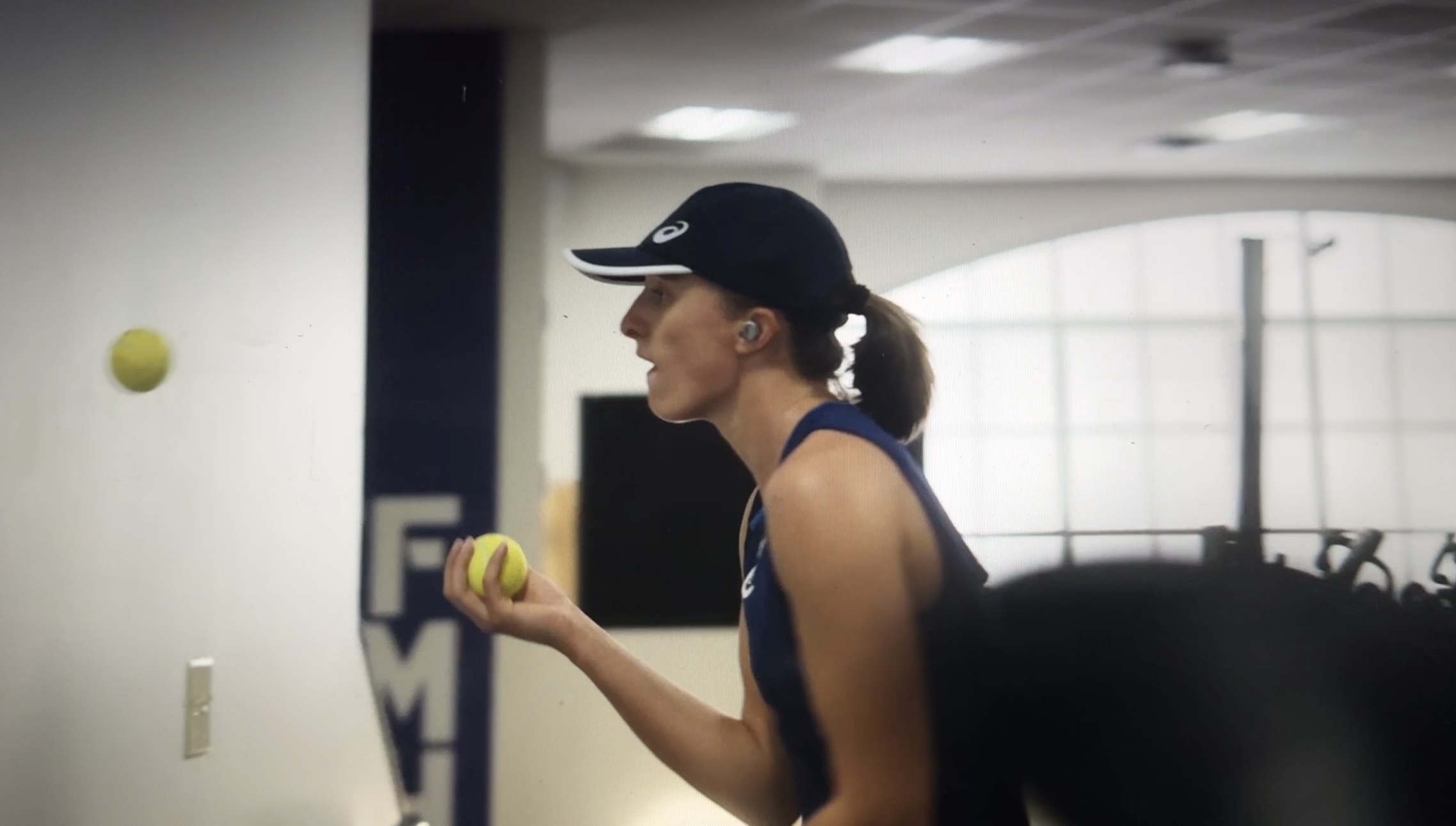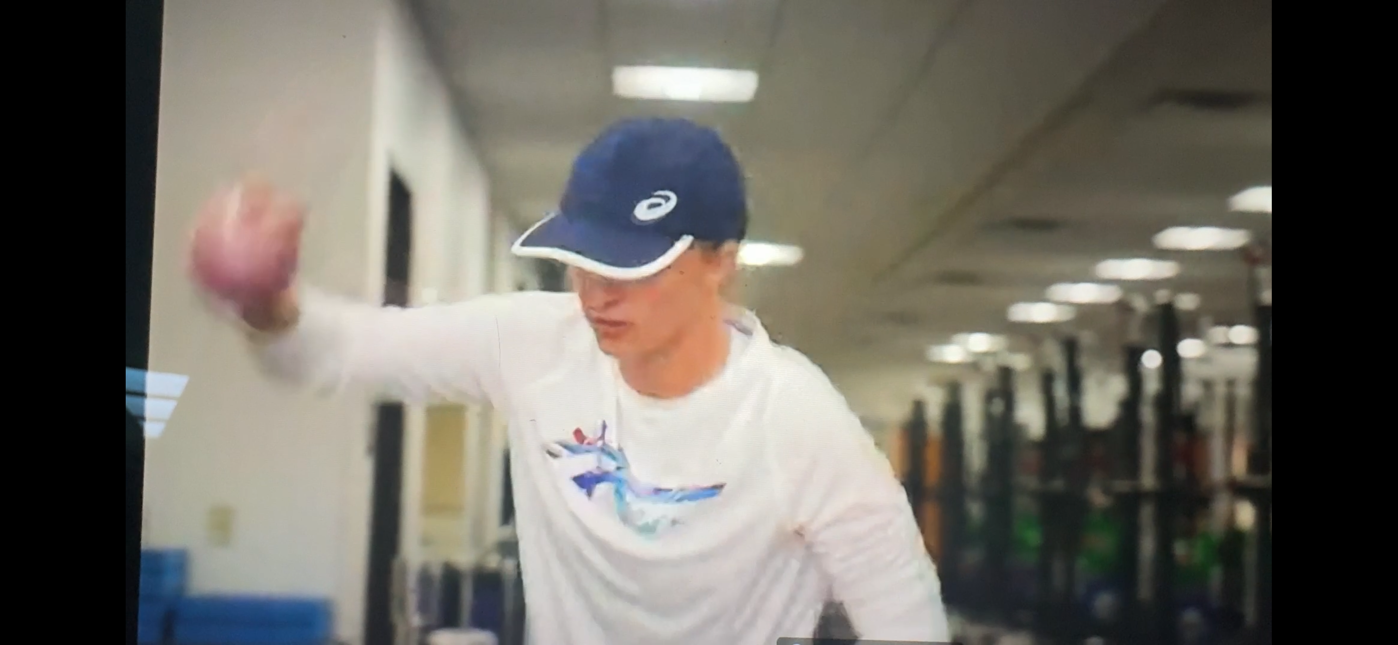I can see the light at the end of the tunnel. The recent announcement that the Netflix docuseries “Break Point” will not be renewed for a third season means I am no longer falling further behind. Consequently, I will eventually reach the end of the sequential breakdowns of the tennis training techniques that have made incidental appearances on the show. My current weekly challenge is trying to remember what has already been covered along with whether new variations warrant a second look.
As a case in point, in Season 1 Episode 8, Iga Swiatek is shown preparing for a match by performing a ball reflex drill. While this is similar to the exercise previously described in “Ball Focus Drill in Break Point,” I ultimately decided there is enough material difference to treat this as an entirely new exercise. While Swiatek is using this activity to get her neurons primed before a match at the US Open, it is also good to develop quick reaction times as a part of routine training.
(If you don’t see an animated gif of Swiatek performing this exercise here, your email client or web browser is blocking images.

This drill requires a training partner who stands opposite of the player while holding a tennis ball in each hand. The player places her hands on top of the training partner’s hands. Without warning, one of the balls is dropped. The object is to catch the ball before it bounces using the hand on the opposite side of the ball that was dropped.
I frequently see this drill performed with the player trying to catch the ball using the hand on the same side. This variation is actually better for tennis players because it gets the body rotating in the right direction for the backswing of a ground stroke. That not only primes the quick reflex, but also the motion that will immediately follow on court. Everything that Swiatek does just seems to be a little bit better.
I have to confess that I rarely do this drill, but only because it requires a willing training partner. As it turns out, the rest of my family seems to be allergic to our home gym. I rarely have the opportunity to do this ball reflex drill. That is a shame.
Tennis players seeking to elevate their on-court performance should consider ball reflex drills as a recurring aspect of their overall training. These exercises develop and refine split-second decision-making crucial for the sport. Embracing ball reflex drills could be your missing link to optimal tennis performance.



